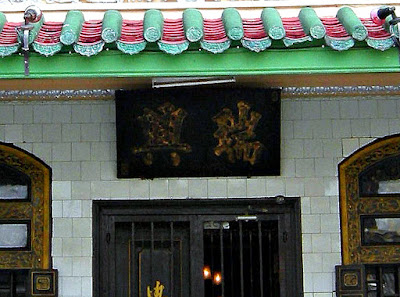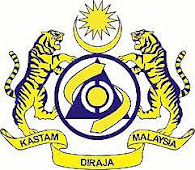The Baba Nyonya Heritage Museum here is a must see. There are two ladies who do guided tours (the slimmer lady was really fun) and tours run for about 30-40 minutes. The museum is right in the middle of Chinatown and runs parallel to Jonker Street
About the Baba Nyonya Museum
The house was built in 1896, and was the family home of the Baba Chan family known as Rumah Abu. Chan Kim Lay, aged 83, is the fourth generation of his family.
It is in a well-preserved traditional Peranakan town house, built in 1896 by millionaire rubber planter Chan Cheng Siew. Today it is owned by William Chan and his family, who conduct tours of their ancestral home. The interior is that of a typical 19th-century residence and all the rooms are still as they would have been 100 years ago. The house contains family heirlooms and antiques, including Nyonyaware porcelain and blackwood furniture with marble or mother-of-pearl inlay, and silverware. There is also a collection of traditional wedding costumes, photographs and kitchen utensils. The kitchen sink has the name of William Chan's great grandfather carved on it. The information-packed tours are run regularly throughout the day.
Above: Baba and Nyonya
This cut out is to the left of the entrance door. You can see here the beautiful clothes that were worn at the time.
Sunday 21st March
Today's "sightseeing" was on the Chinatown side of the Malacca River. I asked Liz (part owner of Heeren House) the best route to take to avoid backtracking and the Baba Nyonya Heritage Museum was first on my "list" seeing as it was in Heeren Street, only just up the road from where I was staying. The metal security door was locked and you had to press the bell. A lady came, asked did I want to do a tour, the next one was starting in about 15 minutes and let me in. Price was a few ringitts. She said no photos were allowed inside the museum (you can take as many pics as you like of the outside though) This (she said) was because people came, took photos and made copies of the furnishings. At the end of the tour you can buy souvenirs. (I bought postcards and took photos of the postcards.)
Above: Baba Nyonya Heritage Museum
We learnt the fascinating history of the Baba Nyonyas who are descendants of the Chinese who came to Malaysia and married Malays. The offspring were the Baba (male) Nyonya (female). They are also known as ‘Straits-born Chinese’ or ‘Peranakans’. The Straits Chinese were of noble descent and adopted much of the Malay culture as their own. Elderly Chinese ladies were very conservative and would peek through the holes in the fancy carved timber to see who was in the room where the master of the house conducted his business affairs.
Above: Jee Ho
The Chinese signboard above the main door way is called a Jee Ho.
Above: Baba Nyonya Entrance
As we walked through the middle door (see in photo above), we learnt that the present owner who is the grandson (or the great grandson?) of the original owner had turned his family home into a museum some years ago and was about 70 or 80 years old, and though he might be "old" his brain is as sharp as a tack. The Chinese man who originally bought the house, bought one house first, then the second then the third and turned them into one house. Originally the entrance was the door of the house to the right but that has now been locked and the middle house has the entrance.
Above: The First Lady of the House
After walking in, we moved to the room on the right which is where business was conducted. Chinese ladies never took part in this and the wives of the business men sat in another room and played card games. The table had drink holders which could be pulled out from the table to hold cups/glasses. They must have been very bored playing cards and eating sweetmeats. A far different lifestyle than today.
Moving back into the centre and walking towards the back is a very large area with a sunken tiled area. There is no roof - houses were very narrow, had windows at the front only, so natural light was needed and was therefore necessary to have this area for when it rained, otherwise the house would have been flooded. Another interesting fact - the only door is at the front - there are no back doors. So bad guys had no way of entering the house. That is also the reason windows are at the front of the house only.
Moving toward the front of the house, just in front of the atrium is a beautiful staircase with carpet on the upper level. We were told to remove our shoes. The first part is circular and at the top on the right is a long hallway with sideboards displaying antiques. One of these held very, very old bottles of brandy and cognac. We were instructed not to sample them. Asking the tour guide if the taste would be better now due to age, she laughed and said she wasn't sure but nobody was game enough to try!
Above: Baba Nyonya carved furniture
CCTV
We may think we invented CCTV, but those Chinese invented it first! They were very smart - after climbing up the stairs, we were led to the area in the middle of the house near the front and instructed to look down. There was a small square about 6" (15 cms), our guide pulled something and lifted it off and there we had a view of the entrance door below. She explained this was how the master of the house determined who he would allow to come into his home - if he didn't like the look of you, a bowl of water would be tipped out over you, so always hold an umbrella over your head!
Bridal Chamber
Above: Bridal Chamber
The bridal chamber which you see above is a most magnificant bed with rich tapestries and furnishings. This is where the master of the house and his bride slept. There is a ceremony held first before they jump into bed. As marriages were arranged, the bride had only seen her bridegroom's face through the peephole before the wedding, the groom hadn't seen the bride at all and they needed to get to know each other first. Such a sensible idea really.
There was a large mirror a few feet from the bed, the bride sat on a chair near the bed and the groom would look in the mnirror to see the face of his bride. This way he was prepared should he be unlucky enough to have married an ugly lady! (As I mentioned, such a sensible idea don't you think?) After this, they would then sit at a table and partake of drinks and foods while they became comfortable with each other. The bed is quite small by today's standards as people were quite a bit shorter and smaller back in those days.
Above: Inside the museum
Coming out from the bridal chamber we moved to the left along a passageway to the children's rooms. This passage had windows which faced the front and we could see the courtyard below. There was a staircase off to the right and for safety and security there was a folding door which opened at the top staircase area and unfolded to seal off access. Very good if the husband had had a night on the town and wanted to sneak in. Also very useful if the lady of the house was annoyed with him - all she had to door was seal this off and the poor old husband had to spend the night outdoors!☺
Coming back down the stairs, putting our shoes back on we were led to the kitchens. Those poor servants had no modern day conveniences of today and must have been a very healthy bunch indeed. The master and his family ate at one table - there was another table (not nearly as glorious) where the servants ate. Beautiful china was arrayed and the more intricate the design, the wealthier the family. Blue and white china is used for funerals only. You can see in the above collage, top left hand photo, the pink floral china which was in use.
The owner of the house had had installed modern toilets near here which we could use, and souvenirs were in a smallish alcove. It was a most instructive tour and should I find myself in Malacca again, I'd definitely do the tour again.
Next: Chinatown
Malaysia Time
Click On Your Flag To Translate
Malaysia and Cambodia
Hello,
This is about my upcoming trip to Malaysia and Cambodia. The first part is pre-trip - information about flights, itineraries, accommodation and all the things that you need to do to plan an overseas holiday. This is my first trip to Asia and I hope it may help others. Comments are very welcome and anyone who has travelled to Malaysia and/or Cambodia, please feel free to comment and offer any advice or tips that you think would be helpful. As of today ( 28th February) , in exactly 11 days (minus 30 minutes) I will be in Kuala Lumpur.
Cheers.
I had the most amazing time and hope you enjoy reading about my trip. Each post is numbered and I'm doing them in order from start to finish - a little like a diary.
ANGKOR WAT SUNRISE
This is about my upcoming trip to Malaysia and Cambodia. The first part is pre-trip - information about flights, itineraries, accommodation and all the things that you need to do to plan an overseas holiday. This is my first trip to Asia and I hope it may help others. Comments are very welcome and anyone who has travelled to Malaysia and/or Cambodia, please feel free to comment and offer any advice or tips that you think would be helpful. As of today ( 28th February) , in exactly 11 days (minus 30 minutes) I will be in Kuala Lumpur.
Cheers.
I had the most amazing time and hope you enjoy reading about my trip. Each post is numbered and I'm doing them in order from start to finish - a little like a diary.
Wednesday
Subscribe to:
Post Comments (Atom)




















No comments:
Post a Comment